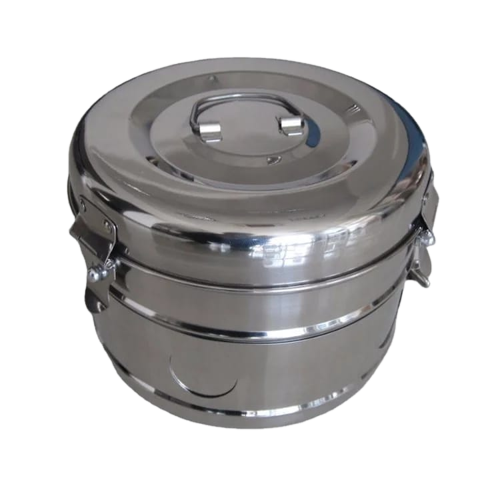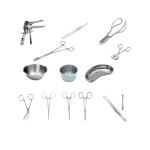A medical surgical sterilization drum (also called a surgical instrument sterilization container or autoclave drum) is a reusable cylindrical or rectangular container used in hospitals and clinics to hold, transport, and sterilize surgical instruments and other medical tools. These drums are specifically designed to be used in steam sterilizers (autoclaves).
✅ Key Features of a Medical Surgical Sterilization Drum:
- High-Quality Stainless Steel Construction:
- Made from durable, rust-resistant stainless steel (usually grade 304 or 316).
- Withstands repeated sterilization cycles and high temperatures.
- Perforated Body and Lid:
- Small vents or perforations on the drum body and lid allow steam to penetrate during autoclaving.
- Often covered by a sliding or rotating band/strip to open or close the perforations before or after sterilization.
- Locking Mechanism or Clamp Closures:
- Ensures secure sealing during sterilization and safe handling of sterile instruments afterward.
- Available in Different Sizes and Shapes:
- Common sizes range from small (6–10 inches) for minor instruments to large (12–15 inches or more) for full surgical sets.
- Can be round or rectangular, depending on the type and quantity of instruments.
- Autoclavable Indicator Slot:
- May include a label holder or chemical indicator slot to monitor sterilization status.
- Stackable Design:
- Flat-top and bottom surfaces allow for easy stacking in sterilization trays or storage shelves.
- Reusable and Cost-Effective:
- Designed for long-term use, reducing the need for single-use packaging.
🛠️ Uses:
- Sterilizing surgical instruments, dressings, and small equipment.
- Transporting sterile items between the sterile processing department and the operating room or wards.
- Storage of instruments in a sterile condition until needed.
🔒 Safety Note:
After sterilization, the vents should be closed immediately to maintain sterility until use.






